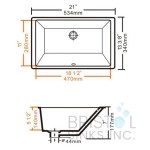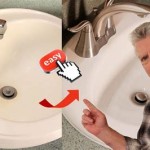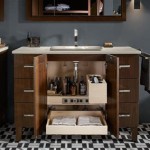The Comprehensive Guide to Understanding the Cost of Moving Bathroom Plumbing
Relocating bathroom plumbing is a significant undertaking in any home renovation project. It involves altering the existing water supply and drainage systems within a property, and consequently understanding the associated costs is crucial for effective budgeting and planning. These costs can vary widely depending on several factors including the extent of the plumbing relocation, the materials used, the complexity of the structural changes required, and regional labor rates.
Moving bathroom plumbing is rarely a simple task. It frequently requires opening up walls, floors, and potentially ceilings to access existing pipes and reroute them to the desired new location. This process often necessitates permits, inspections, and the expertise of licensed plumbers to ensure compliance with local building codes and regulations. Neglecting these essential steps can lead to serious problems down the line, including leaks, water damage, and even structural instability.
This article aims to provide a comprehensive overview of the various cost factors associated with moving bathroom plumbing. By understanding these factors, homeowners can develop a more realistic budget and avoid unexpected expenses during their renovation projects. The information presented is designed to be informative and practical, allowing homeowners to navigate the complexities of this challenging home improvement task.
Key Factors Influencing the Cost of Plumbing Relocation
Several key factors contribute to the overall cost of moving bathroom plumbing. These factors can be broadly categorized as the scope of the project, the materials required, the labor involved, and any unforeseen complications that may arise. Each of these areas carries its own set of considerations that affect the final price.
Scope of the Project: The extent of the plumbing relocation directly impacts the cost. Moving a single fixture a short distance will be significantly less expensive than completely rearranging the entire bathroom layout. The more extensive the relocation, the more pipe that needs to be moved or replaced, and the more structural modifications that are necessary.
Materials Required: The type and quantity of plumbing materials used also play a crucial role in determining the cost. Copper, PEX, and PVC are common piping materials, each with its own price point and suitability for different applications. Fixtures like toilets, sinks, showers, and bathtubs also contribute to the material cost, and their selection can greatly influence the overall budget.
Labor Costs: Labor costs are generally a significant portion of the total expense. Licensed plumbers charge hourly rates that vary depending on their experience, expertise, and location. The complexity of the plumbing relocation will directly affect the number of hours required to complete the job. Additional tradespeople, such as carpenters, drywallers, and tile installers, may also be needed to complete the project, further increasing labor costs.
Unforeseen Complications: Renovation projects often uncover unforeseen problems that can add to the cost. These complications can include hidden plumbing issues, structural damage, or the presence of hazardous materials like asbestos. It's always wise to factor in a contingency budget to cover these unexpected expenses.
Detailed Breakdown of Cost Components
To gain a clearer understanding of the cost involved, it's necessary to examine the individual components that make up the total expense of moving bathroom plumbing. These components include the cost of plumbing materials, the cost of labor, the cost of permits and inspections, and any additional expenses related to demolition, repairs, and finishing work.
Plumbing Materials: The cost of plumbing materials will depend on the type and quantity of pipes, fittings, and fixtures required. For example, copper pipes are generally more expensive than PEX or PVC pipes, but they offer greater durability and resistance to corrosion. The cost of fixtures such as toilets, sinks, showers, and bathtubs can range from budget-friendly options to high-end designer models. When selecting materials, it's important to consider both quality and cost-effectiveness.
Labor Costs: Labor costs constitute a significant portion of the overall expense. Licensed plumbers typically charge hourly rates that can vary depending on the region and the plumber's experience. The complexity of the plumbing relocation will determine the number of hours required to complete the job. When hiring a plumber, it's crucial to obtain multiple quotes and carefully review the scope of work to ensure that all necessary tasks are included.
Permits and Inspections: Most jurisdictions require permits for plumbing work, and these permits often come with associated fees. The cost of permits can vary depending on the location and the scope of the project. Inspections are also required to ensure that the plumbing work meets local building codes and regulations. Failing to obtain the necessary permits and inspections can result in fines and delays.
Demolition, Repairs, and Finishing Work: Moving bathroom plumbing often involves demolition work to access existing pipes. This demolition work can create additional expenses related to debris removal and disposal. Once the plumbing work is completed, repairs may be necessary to patch up walls, floors, and ceilings. Finishing work, such as painting, tiling, and installing new fixtures, will also add to the overall cost.
Estimating the Cost and Minimizing Expenses
Estimating the cost of moving bathroom plumbing requires careful planning and consideration of all the factors discussed above. Obtaining multiple quotes from qualified plumbers is essential for comparing prices and services. Additionally, homeowners can take steps to minimize expenses without compromising the quality of the work.
Obtain Multiple Quotes: It is advisable to obtain at least three quotes from licensed plumbers. When comparing quotes, be sure to review the scope of work carefully to ensure that all necessary tasks are included. Pay attention to the materials being used and the hourly rates being charged. Ask for references and check online reviews to assess the plumber's reputation and reliability.
Plan Carefully and Avoid Changes: Careful planning is crucial for minimizing expenses. Before starting the project, create a detailed plan that outlines the scope of work, the materials to be used, and the desired layout of the bathroom. Avoid making changes to the plan once the project has started, as these changes can lead to additional costs and delays.
Consider DIY Options for Non-Plumbing Tasks: Homeowners can save money by handling non-plumbing tasks themselves. This might include demolition work, debris removal, painting, and tiling. However, it's important to have the necessary skills and experience to perform these tasks safely and effectively. Always consult with a professional plumber before attempting any plumbing work yourself.
Choose Cost-Effective Materials: Selecting cost-effective materials can help reduce the overall cost of the project. While it's important to choose durable and reliable materials, there are often more affordable options available. For example, PEX or PVC pipes can be used as alternatives to copper pipes in certain applications. Consider using standard fixtures and finishes rather than high-end designer options.
Factor in a Contingency Budget: Renovation projects often uncover unforeseen problems that can add to the cost. It's advisable to factor in a contingency budget to cover these unexpected expenses. A contingency budget of 10-15% of the total project cost is generally recommended.
Ultimately, understanding the various cost factors associated with moving bathroom plumbing is essential for effective budgeting and planning. By carefully considering these factors and taking steps to minimize expenses, homeowners can successfully navigate this challenging home improvement task and achieve their desired bathroom transformation.

How Much Does It Cost To Move Plumbing In The Bathroom Countyoffice Org

How Much Does It Cost To Move Plumbing In A Bathroom

How Much Does It Cost To Move Plumbing In The Bathroom Countyoffice Org

The Plan And Cost Of Adding A Basement Bathroom

Why Bathroom Remodel Costs Vary So Much Four Important Considerations

The Cost Of Moving Plumbing Fixtures A Comprehensive Guide 2025 Ysis

Bathroom Remodel Costs A Detailed Breakdown For La

The Cost Of Moving A Bathroom Upstairs In 2025 Checkatrade

Cost To Plumb A Bathroom Plumbing For Remodel Fixr

The Cost Of Moving A Bathroom Upstairs In 2025 Checkatrade







